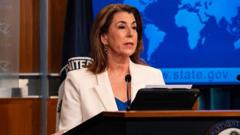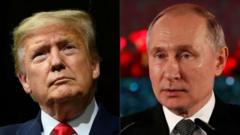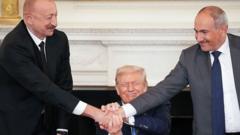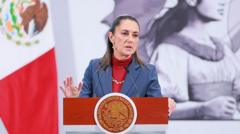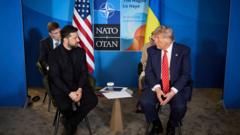**U.S. Defense Secretary Pete Hegseth believes an agreement may be reached, but divisions among NATO allies are evident.**
**NATO Allies Face Challenges in Increasing Military Expenditures**

**NATO Allies Face Challenges in Increasing Military Expenditures**
**Despite pressure from the U.S., member nations struggle to agree on defense spending increases as geopolitical tensions rise.**
NATO's member states are grappling with varying perspectives on increasing defense spending to 5 percent of each nation's GDP, a target set forth by President Trump. In a meeting held at NATO headquarters in Brussels, U.S. Defense Secretary Pete Hegseth projected a sense of optimism that countries would indeed reach this spending goal, potentially as early as this month.
However, a clear divide among the 32 member nations remains, with many officials indicating that any agreement will ultimately be determined at the upcoming NATO summit in The Hague. While some countries acknowledge the urgency necessitated by Russian hostilities and other global threats, others are hesitant to commit additional resources, prioritizing alternate national needs.
Secretary Hegseth expressed confidence regarding the willingness of allies to increase military expenditures, stating that there was "almost near consensus" within the alliance, although he noted that "a few countries are not quite there yet." Hegseth emphasized the pivotal nature of this spending, especially considering the precarious security landscape the alliance faces.
Currently, the United States allocates about 3.4 percent of its GDP toward defense, and as the largest military power in NATO, it contributes significantly more in absolute terms than other member nations. President Trump has proposed a substantial fiscal defense budget of $1.01 trillion for the upcoming fiscal year, which, according to the Peterson Institute for International Economics, would require a further $200 billion to reach the 5 percent goal.
As NATO moves forward towards its leadership meetings, the outcome of these deliberations will be critical in shaping the alliance's response to evolving security threats in Europe and beyond.
However, a clear divide among the 32 member nations remains, with many officials indicating that any agreement will ultimately be determined at the upcoming NATO summit in The Hague. While some countries acknowledge the urgency necessitated by Russian hostilities and other global threats, others are hesitant to commit additional resources, prioritizing alternate national needs.
Secretary Hegseth expressed confidence regarding the willingness of allies to increase military expenditures, stating that there was "almost near consensus" within the alliance, although he noted that "a few countries are not quite there yet." Hegseth emphasized the pivotal nature of this spending, especially considering the precarious security landscape the alliance faces.
Currently, the United States allocates about 3.4 percent of its GDP toward defense, and as the largest military power in NATO, it contributes significantly more in absolute terms than other member nations. President Trump has proposed a substantial fiscal defense budget of $1.01 trillion for the upcoming fiscal year, which, according to the Peterson Institute for International Economics, would require a further $200 billion to reach the 5 percent goal.
As NATO moves forward towards its leadership meetings, the outcome of these deliberations will be critical in shaping the alliance's response to evolving security threats in Europe and beyond.







